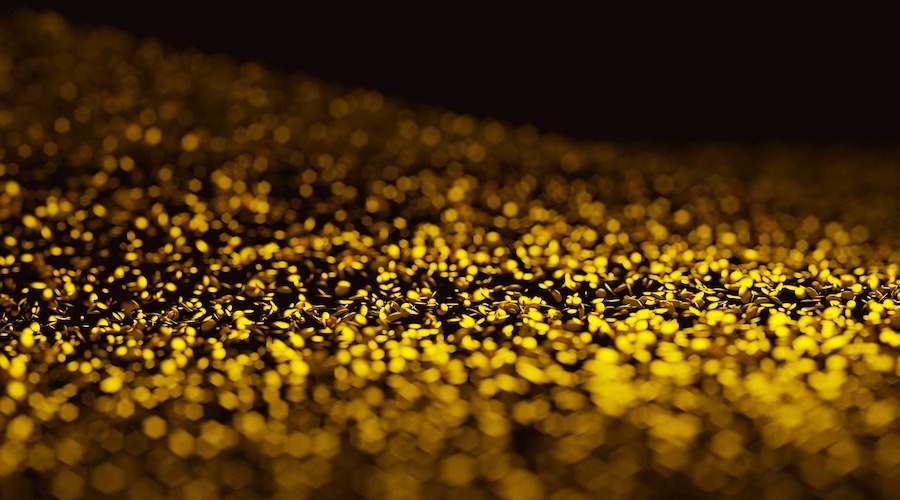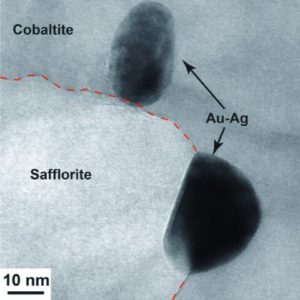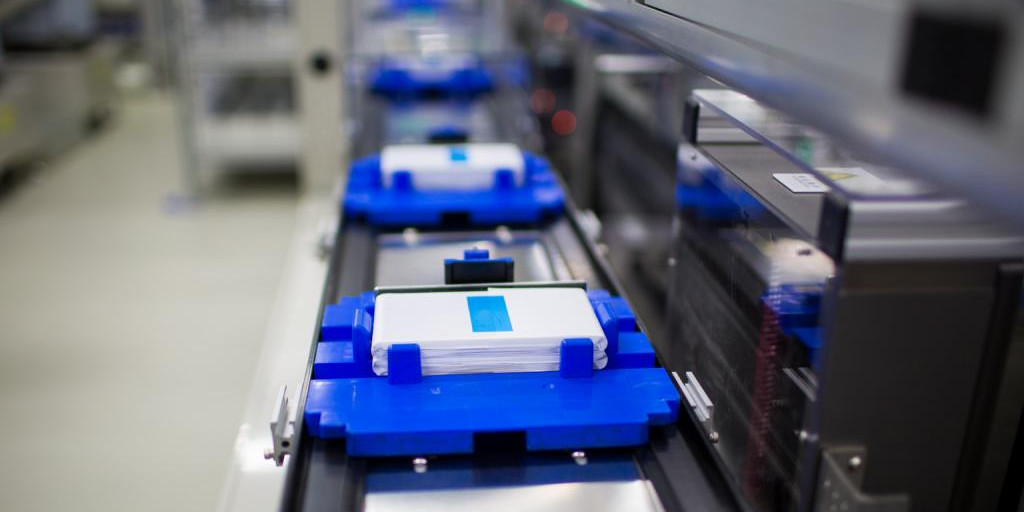Melting nanoparticles challenge traditional gold transport models

Recent research led by scientists at the University of Barcelona reopened the scientific debate on the validity of traditional models related to the transport of gold in nature.
The new study reveals that gold nanoparticles exposed to hydrothermal fluids can melt and produce gold nanomelts at temperatures lower (<500°C) than the melting temperature of macroscopic gold (1,064°C). According to this discovery, gold could be remobilized by gold nanomelts in aqueous fluids, allowing more gold to be transported more efficiently to form economically attractive accumulations.
Historically, gold deposits were known to form when metal was transported and dissolved by hot aqueous solution flows, or hydrothermal fluids, until it accumulated in some areas of the earth’s upper crust.
Most of the world’s gold deposits have been formed by this mode of transport. However, gold can also accumulate when primary gold deposits are eroded once they are exposed to the surface by tectonic processes on land, resulting in the famous gold nuggets that prospectors found along riverbanks at the height of the gold rush.

Although John Turkevich succeeded in synthesizing gold nanoparticles in the 1950s, it was not until forty years later, in the early 1990s, that they were documented in natural gold deposits. Specifically, these nanoparticles were found in the bonanza type of deposits in Nevada.
The discovery of these nanoparticles supported the hypothesis that gold could be transported as nanoparticles suspended in fluid rather than as a dissolved species.
“There is a wide variety of hydrothermal gold deposits depending on a number of factors. Globally, the most important are orogenic, Carlin and epithermal gold deposits,” Joaquín A. Proenza, co-author of the study, said in a media statement.
“However, the characterization of these mineralizing fluids has shown that their ability to dissolve gold is very low. Regardless of their nature, these fluids are incapable of transporting the amount of gold needed to explain auriferous mineralizations, especially those very rich in gold of the bonanza type.”
According to Proenza, the prior means that the formation of gold deposits cannot be only caused by hydrothermal fluids transporting dissolved gold.
When gold nanoparticles melt down
The paper, published in the journal Scientific Reports, describes for the first time the melting process of gold nanoparticles.
“This process has been discovered in gold-rich samples from the Cu-Co-Ni-Au deposits of Cuba’s Habana-Matanzas region, which show a large amount of gold nanoparticles,” Diego Domínguez-Carretero, lead author of the article, said. “Our research reveals how gold nanoparticles exposed to hydrothermal fluids have the ability to melt and produce gold nanomelts.”
Domínguez-Carretero pointed out that the study specifically describes the release of the nanoparticles from the mineral in which they were included, the exposure to the hydrothermal fluid and subsequent melting, and finally, the remobilization by auriferous nanofusions immiscible with the hydrothermal fluid.
To obtain these results, the team applied classical techniques such as optical microscopy and field emission scanning electron microscopy, together with other more innovative techniques like hydro-separation, focused ion beam and high-resolution transmission electron microscopy.
“To date, the only example of the formation of gold nanomelts required other elements, such as bismuth (Bi), tellurium (Te) or antimony (Sb), which are not always concentrated together with gold in many mineral deposits,” the researcher said. “The study details for the first time the sequence of transformation of gold nanoparticles to gold nanocrystals without requiring other elements.”
For Domínguez-Carretero and his colleagues, this paradigm shift provides a better understanding of the origin of gold and, consequently, helps to establish more realistic genetic models.
“Establishing the genesis, that is, understanding the complex geological processes involved and the factors that condition the formation of a mineral deposit, is an essential goal for geologists,” the research team noted. “Gold mining, like any other type of mining, feeds on these genetic models to establish exploration campaigns to find new deposits.”
{{ commodity.name }}
{{ post.title }}
{{ post.date }}

Comments